Wednesday, January 15. 2020

In South Melbourne markets there is a chocolate shop with a difference. Large display windows here only hint at the yummy offerings to be consumed. Not that you would want to eat a Pokémon, they are way too cute.
Peer in the shop window and you see a chocholate factory in action. Stare into one of the large stainless steel vats with velvety chocolate being churned and risk being hypnotised into purchase submision.
There is nothing typical about Atypic chocolate.
Tuesday, January 14. 2020

I could stare into this golden seascape for hours. The minimal perspective, no distractions, an almost meditative wandering in my imagination through the complexity upon complexity of the worlds both below and above.
I am reminded how rich and how grateful I am for these experiences. Like gold mined from beneath impossible mountains to be scattered across the ocean for all who are willing to see.
Monday, January 13. 2020

Back in the water again after a long dry spell I have rediscovered a wonderful dive site I used dive on when I was teaching. I'd almost forgotten how beautiful the wreck of 'The Australian' can be when you have it all to yourself.
Like all wrecks, 'The Australian', or more affectionately 'The Dredge', is very sensitive to diver behaviour with a very silty deck hiding under all that algae ready to destroy the visibility if you put a fin wrong. It's best to dive here before anyone else arrives if you can.
For me the most enjoyable feature of this wreck are the incredible schools of bullseyes lurking under every overhang, filling every swim-through and surrounding the mostly intact hull.
This school emerging from their hideaway below seemed to complete a circle along with the structure behind. Bullseye geometry!
Sunday, January 12. 2020

When ever I see a solitary shoe lying on the ground, or on a bench, caught in a tree or dangling from an overhead power cable my imagination runs crazy.
Did someone come off the worse for a joke with friends, did something tragic happen here or was it just left and forgotten.
Two shoes, I can imagine all kinds of reasons they might be left behind, but a single shoe bothers me to the core.
I hope it simply got lost and is waiting to be found.
Saturday, January 11. 2020
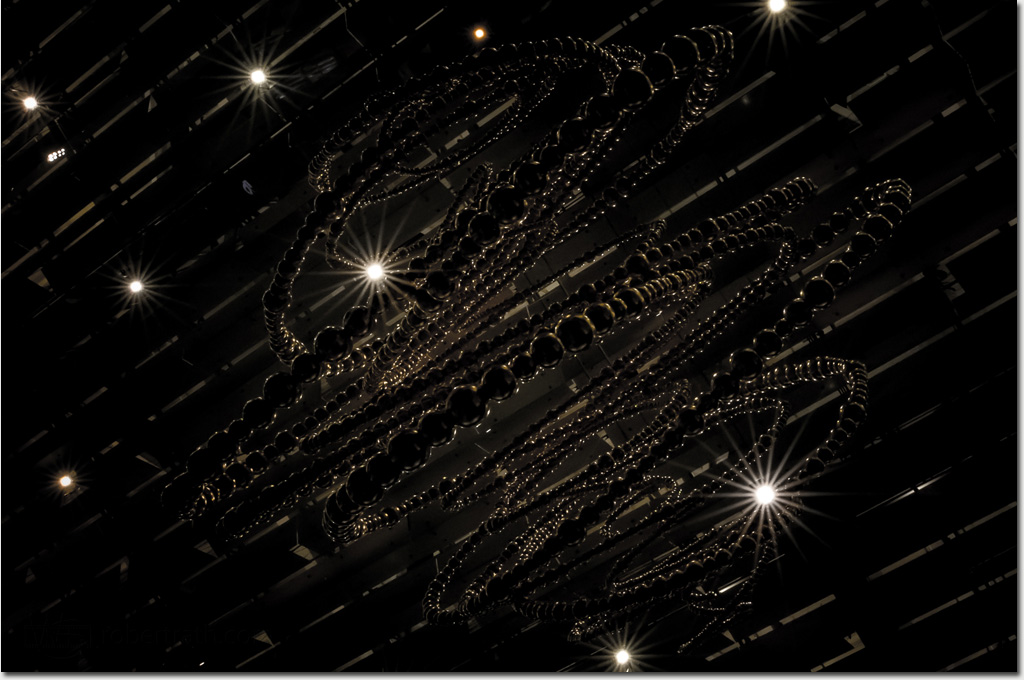
Building designers sometimes enlist incredibly talented artists to help create the mood and feel of a building.
While travelling though Hamad Airport I particularly noticed that very special attention to detail was everywhere. There were no dead spaces. There were no visual eyesores. The entire and vast space was a visual delight.
I'm not sure what I was looking at with this beautiful ceiling piece. It reminded me of the double helix but unlike the DNA of any human.
Friday, January 10. 2020
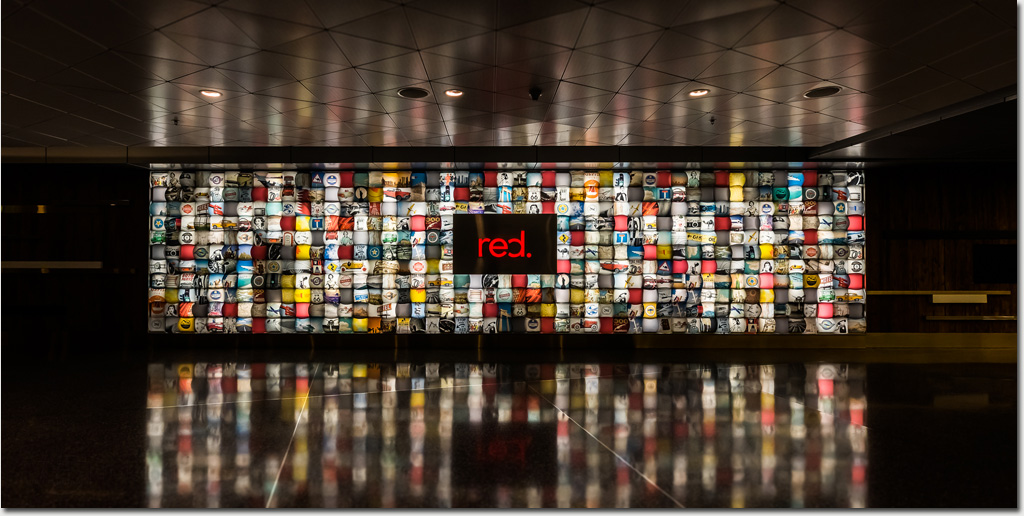
I'm not sure what they mean by 'concept restaurant' here in Hamad Airport.
On closer inspection almost every square in this mosaic carries an American theme. There are a few international tokens but mostly there are repeated themes of big cars, American airlines, gas stations and route 66.
I simply see red.
Thursday, January 9. 2020
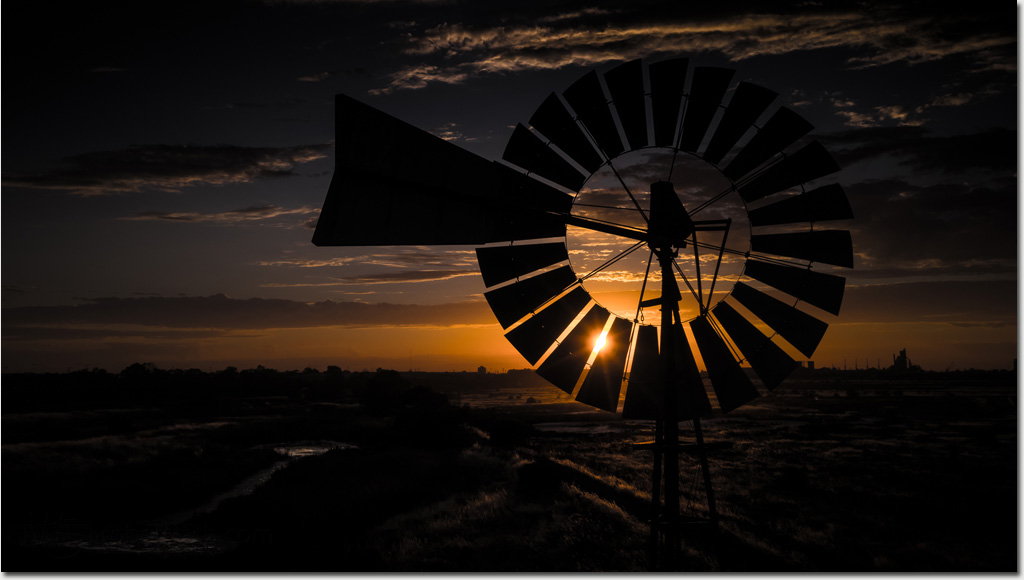
For a couple of years now I have been commuting along a route that takes me past the Barker Inlet Wetlands and the Wingfield Waste and Recycling Centre. I'd noticed the windmills, the prolific bird life and the sights and smells of a civic rubbish dump but in my head I was already at my day job.
Then the roadworks began. The speed limits dropped. I was forced to linger along the route. The more I lingered the more I saw, the more I wanted to see and capture. I've now discovered a huge network of wetlands and am only just beginning to explore them.
It's the windmills I first noticed so that's where I'll start.
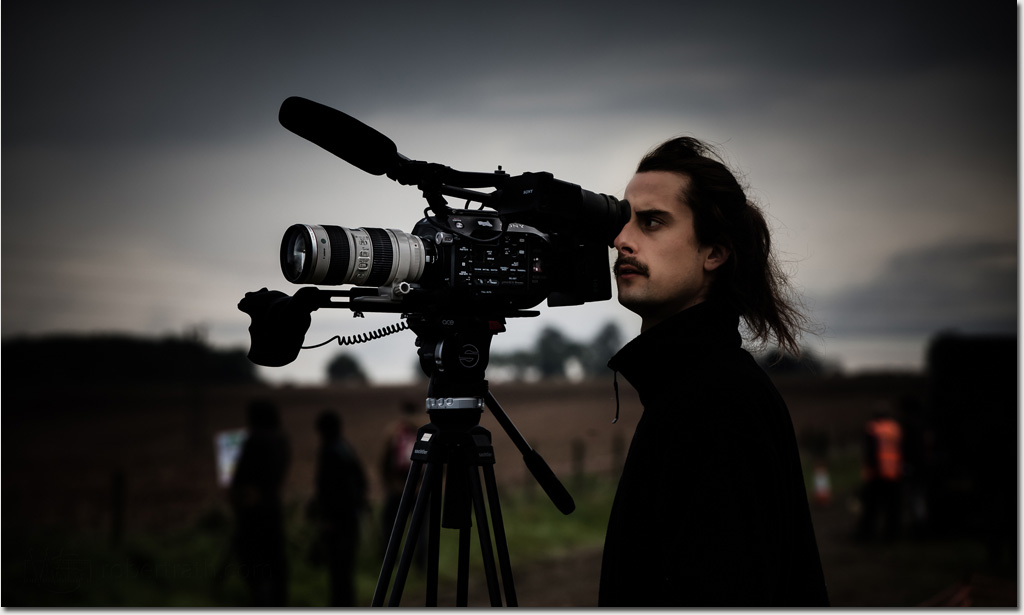
Lake Lockie and its big brother, Lake Hattah, in the Hattah-Kulkyne National Park of northern Victoria is little natural wonder I have only just discovered.
As the Murray River winds it's way through the arid mallee scrub of this region it spills out onto wetlands that cycle from wet to completely dry.
For much of the year there is little water here and even though just as beautiful when dry I can't help but prefer just a little water in this land locked place.
Tuesday, January 7. 2020
It's hot. The run off from the swampy on the roof fills a bucket under the the eave of the house. Every drop captured. Every drop precious.
It's nearly full. Time to water but not every plant can handle this almost brackish Adelaide water.
Under the verandah with a glass of cold water in hand I watch each drop fall. I watch the shape, transient, fluid, rise, splash and slump.
Like a stranger in a strange land I see the shape of water.
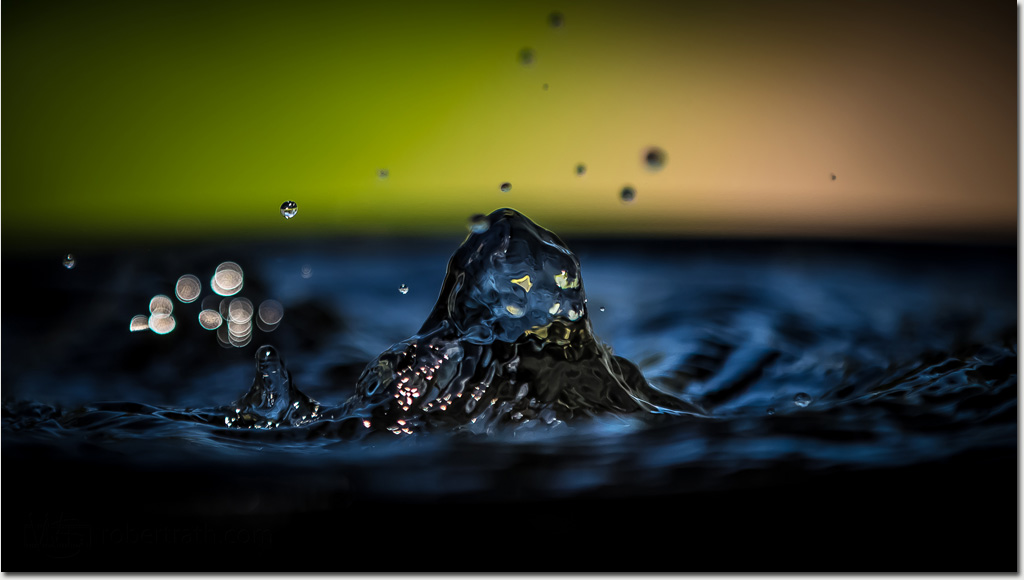
It's hot. The run off from the swampy on the roof fills a bucket under the the eave of the house. Every drop captured. Every drop precious.
It's nearly full. Time to water but not every plant can handle this almost brackish Adelaide water.
Under the verandah with a glass of cold water in hand I watch each drop fall. I watch the shape, transient, fluid, rise, splash and slump.
Like a stranger in a strange land I see the shape of water.
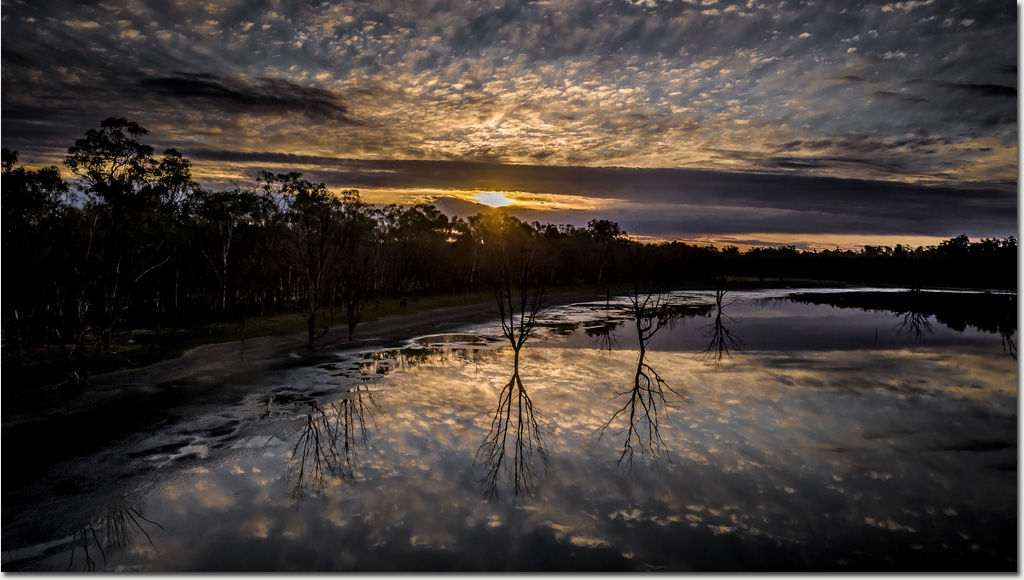
Lake Lockie and its big brother, Lake Hattah, in the Hattah-Kulkyne National Park of northern Victoria is little natural wonder I have only just discovered.
As the Murray River winds it's way through the arid mallee scrub of this region it spills out onto wetlands that cycle from wet to completely dry.
For much of the year there is little water here and even though just as beautiful when dry I can't help but prefer just a little water in this land locked place.
Sunday, January 5. 2020
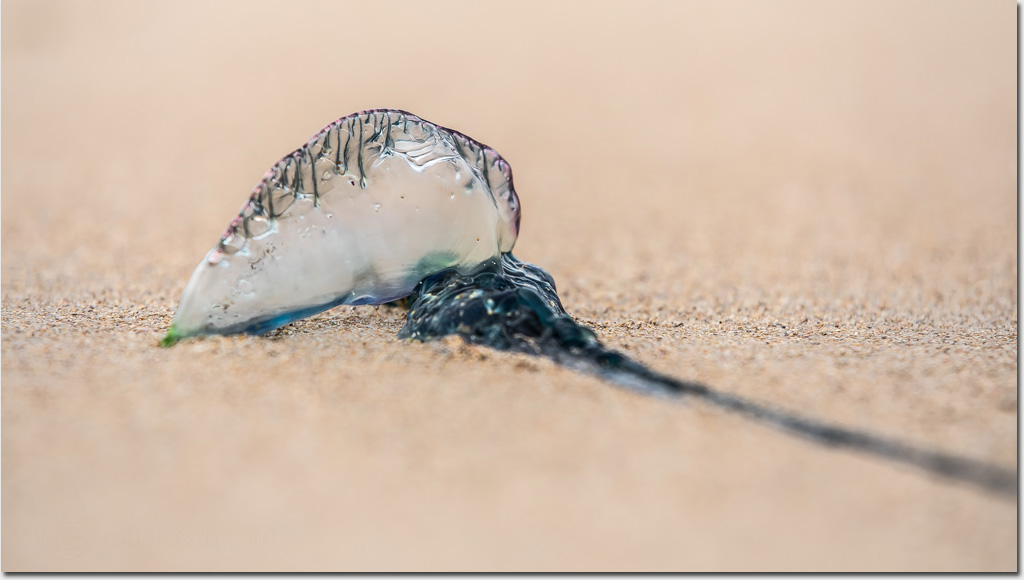
The Bluebottle jellyfish (Physalia utriculus), also known as the Pacific Man O'War, is a complete stranger to my local South Australian waters but here on Bondi Beach, Sydney we found hundreds of them washed ashore.
One poor unsuspecting child must have found these bright blue toys scattered all around too irresistible to ignore. We heard the screams from the pavilion and an ambulance shortly arrived. I hope they are OK.
Curiously we noticed no obvious warnings leaving it up to beach goers to decide how to manage their presence.
Saturday, January 4. 2020
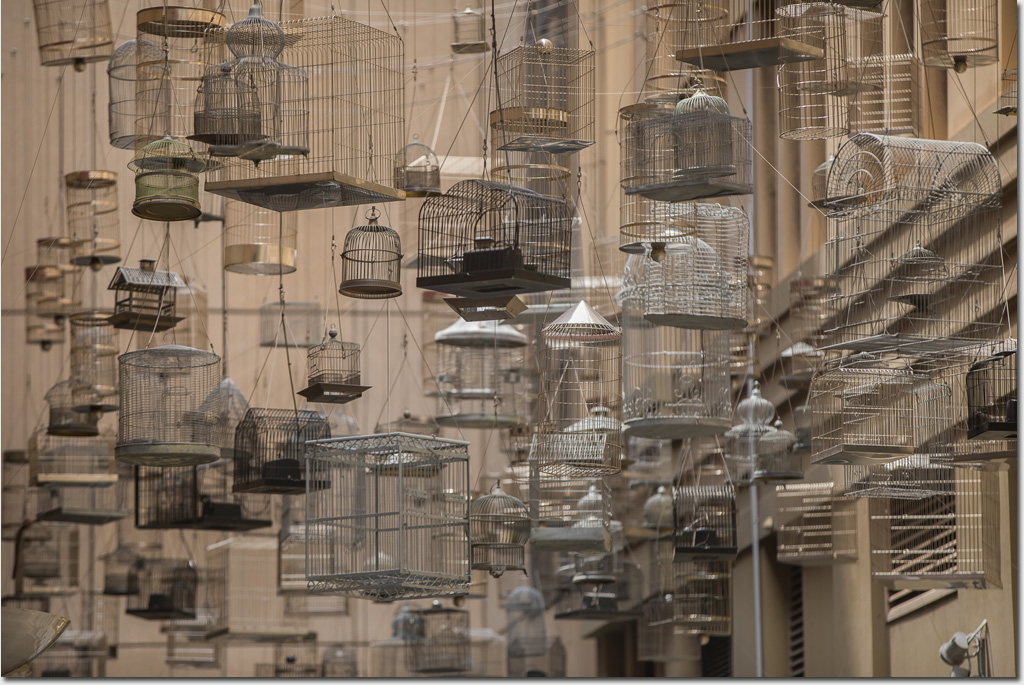
'Birdcages', hidden away in Angle Place Sydney is a magical art installation where the artist, Michael Thomas Hill, has combined suspended birdcages accompanied by recorded sounds of the birds that once lived here.
Walking beneath these cages and hearing those beautiful sounds was both strange and soothing. For a brief moment the city wound it's way back to a time of just bush land and bird call before the spell was broken and the city restored.
Thank you Ken for sharing with us this little gem in a big city.
Friday, January 3. 2020
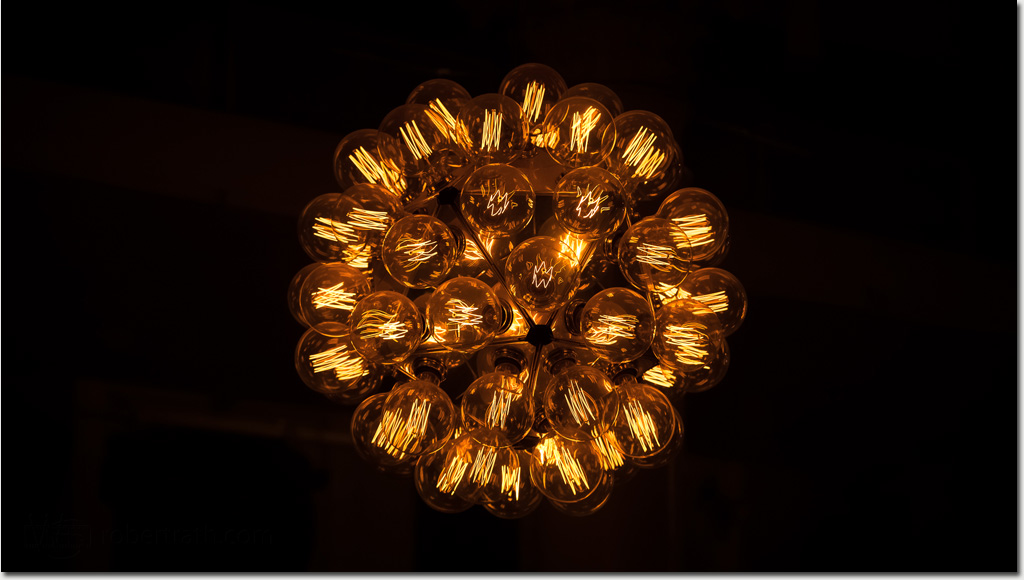
To me lighting is everything but usually its about how the light falls on the things around us.
Sometimes though it is just about the lights and the lighting in Sydney's 'The Establishment' blew me away.
It's more of a globular cluster really rather than a planet but I could not make that roll off the tongue.
Welcome to Planet Establishment.
Thursday, January 2. 2020
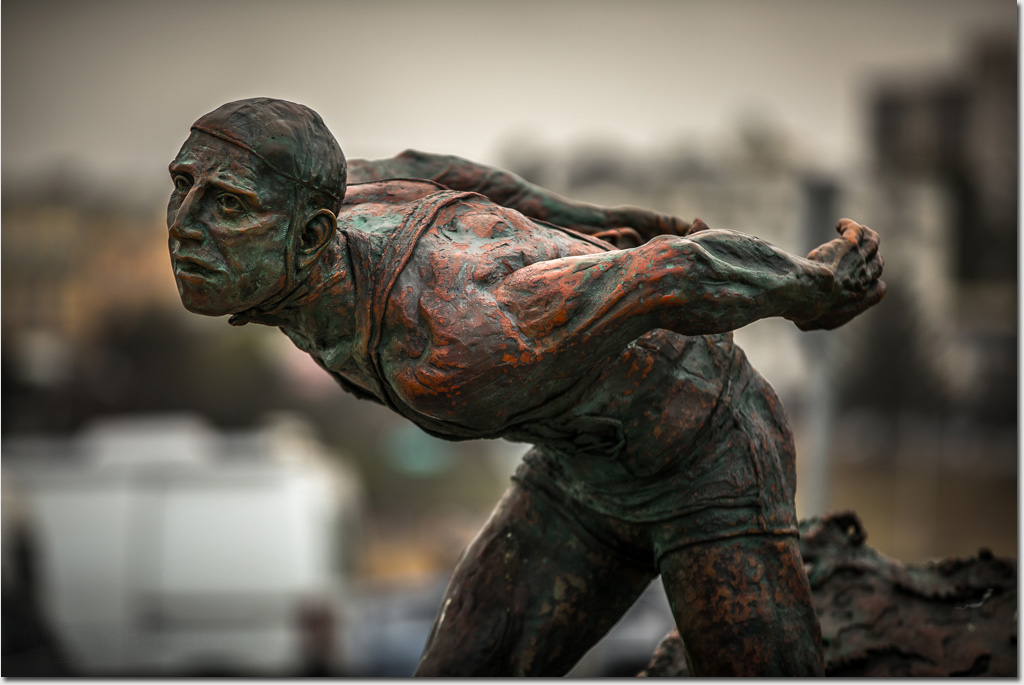
I've only visited Sydney's Bondi beach a few times and every time I find the visual spectacle of surf, beach and thousands of people quite amazing.
After walking the water's edge from one end to the other and back again I was reminded just how seriously the surf lifesavers were taking their responsibility. Fortunately we saw no incidents but I can imagine that the combination of Bondi Beach's attraction to tourists and unfamiliarity with a surf beach's local conditions could easy lead to tragedy.
All surf lifesavers I noticed had their eyes pealed to the water, from the swimmers playing in the inshore break to those further out. Every one of them had a sense of readiness about them.
As we left I noticed the bronze statue, 'Surf Life Saver, 1998', sculpted by Sydney artist Diana Webber and dedicated to the Surf Life Saving Movement recognising the voluntary contribution of surf lifesavers.
Wednesday, January 1. 2020
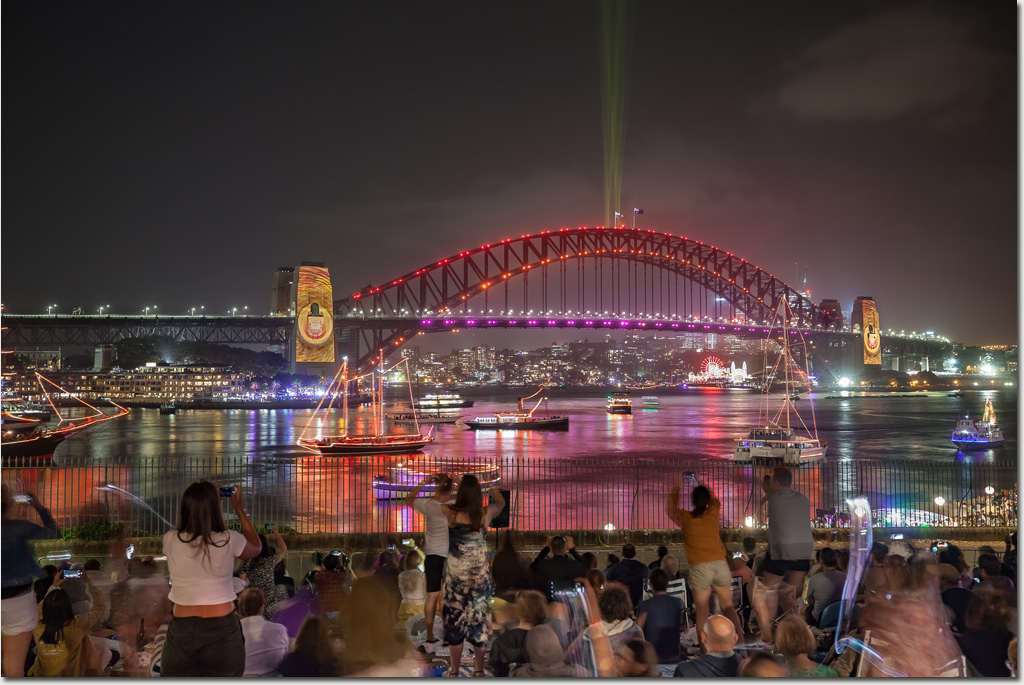
I want to wish everyone out there a wonderful and prosperous 2020. May your hard work or just simple good fortune bring you joy and prosperity.
To all those battling the Australian bushfires either as volunteers or defending your homes, 2020 may start out rough but please stay strong and know our thoughts are with you.
There is so much polarised opinion about the bushfires, the lives lost and that we should have cancelled the Sydney fireworks as a mark of respect. So many opinions and points of view make it hard to have a balanced perspective. For us, entertaining international friends who'd been planning to see the Sydney fireworks as a watershed in their own story of loss, grief and renewal biased my opinion. I am so happy for them that they experienced Sydney's amazing spectacle and I hope they can no move on with their own lives.
We met so many other international visitors here in Sydney and for them the fireworks were a very special part of their Australian adventures. We should never forget that our Australian generosity of spirit and our willingness to give in the face of hardship, extends internationally and binds us as a global community.
That said, as my token of respect for the the bushfires, the lives lost and those defending livelihoods this image is the anticipation of 2020 and the amazing spectacle of Sydney Harbour just moments before midnight.
May 2020 be an awesome year for you all.
… Robert Rath
Sunday, March 3. 2019
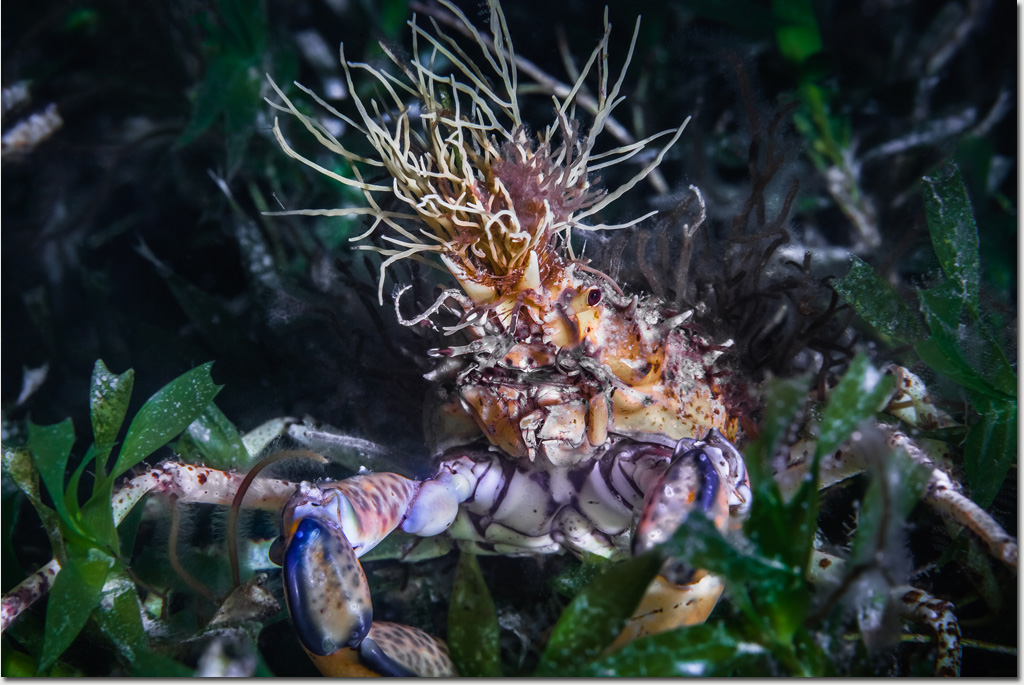
Decorator crabs make fascinators seem lame in comparison to the extravagance of their accessorising.
There are hundreds of species of crabs which decorate themselves in this way and fashion really has nothing to do with it. It's all about survival.
By attaching algae or sponges of their immediate environment they can go about their business unnoticed.
If they move into new territory it's a simple matter of discarding the old and accessorising with their new home.
Decorator Crab, Naxia aurita
Photo: Robert Rath, 'Decorate Me' 1/160s f/18 ISO320 100mm
Saturday, March 2. 2019
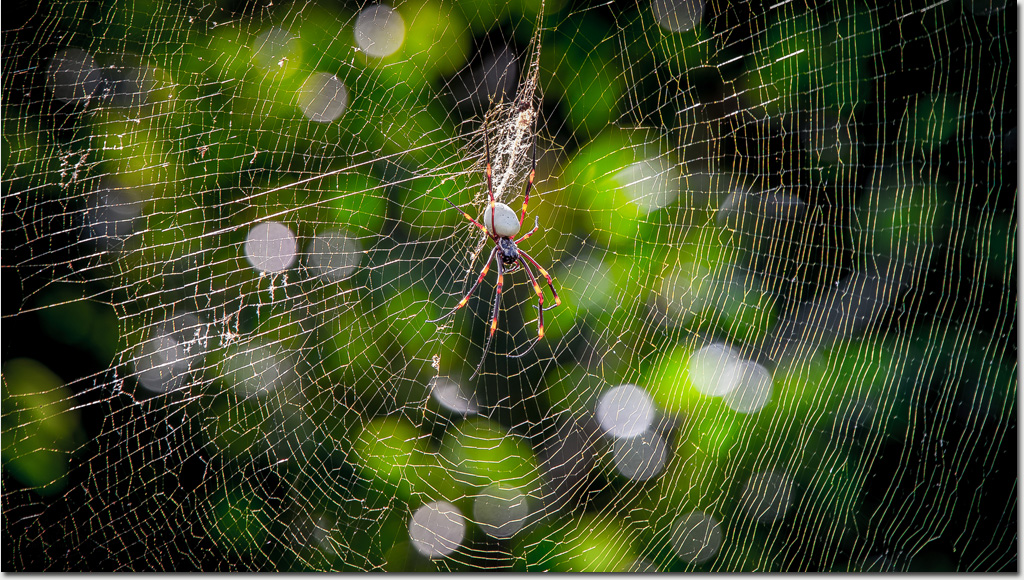
Going back over some of my older photos I came across this golden orb weaver but the background was unusually green and lush. I usually associate golden orb weavers with the arid Australian outback so what confused me for a while is that I was expecting to see muted browns as I was sure this image was taken in the Flinders Ranges.
Going back over dates and travels I soon discovered I'd taken this image in the tropical lushness of a Tongan forest. With that realisation I was taken back to that particular day and how almost every walkway through that forest was barricaded by web after web after web of these giant spiders.
To say the least this experience triggered my old arachnophobia but at least the chance to photograph these amazing creatures went a long way to quell that innate fear.
Tongan Giant Spider, Nephila tetragnathoides
Photo: Robert Rath, 'The Golden Orb Weaver' 1/250s f/4.5 ISO100 200mm
Monday, February 25. 2019
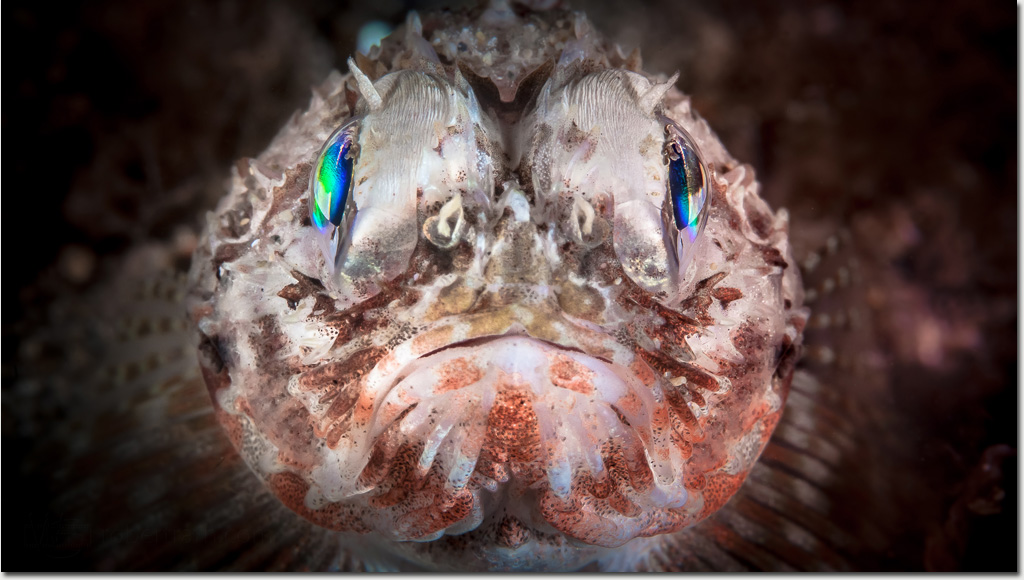
Just imagine being two inches tall, opening your eyes, turning on your torch and coming face to face with ...
Assuming you are still with me you'd quickly become entranced by those amazing blue-green opalesque eyes and what at first seemed ugly becomes beautiful.
You can spot a gurnard perch from quite a distance at night by those incredible eyes. Just scan your torch back and forth anywhere under Edithburgh Jetty and before you know it you too will be experiencing being face to face with this beautiful creature.
Photo: Robert Rath, 'Face 2 Face' 1/160s f/22 ISO320 100mm
Sunday, February 24. 2019
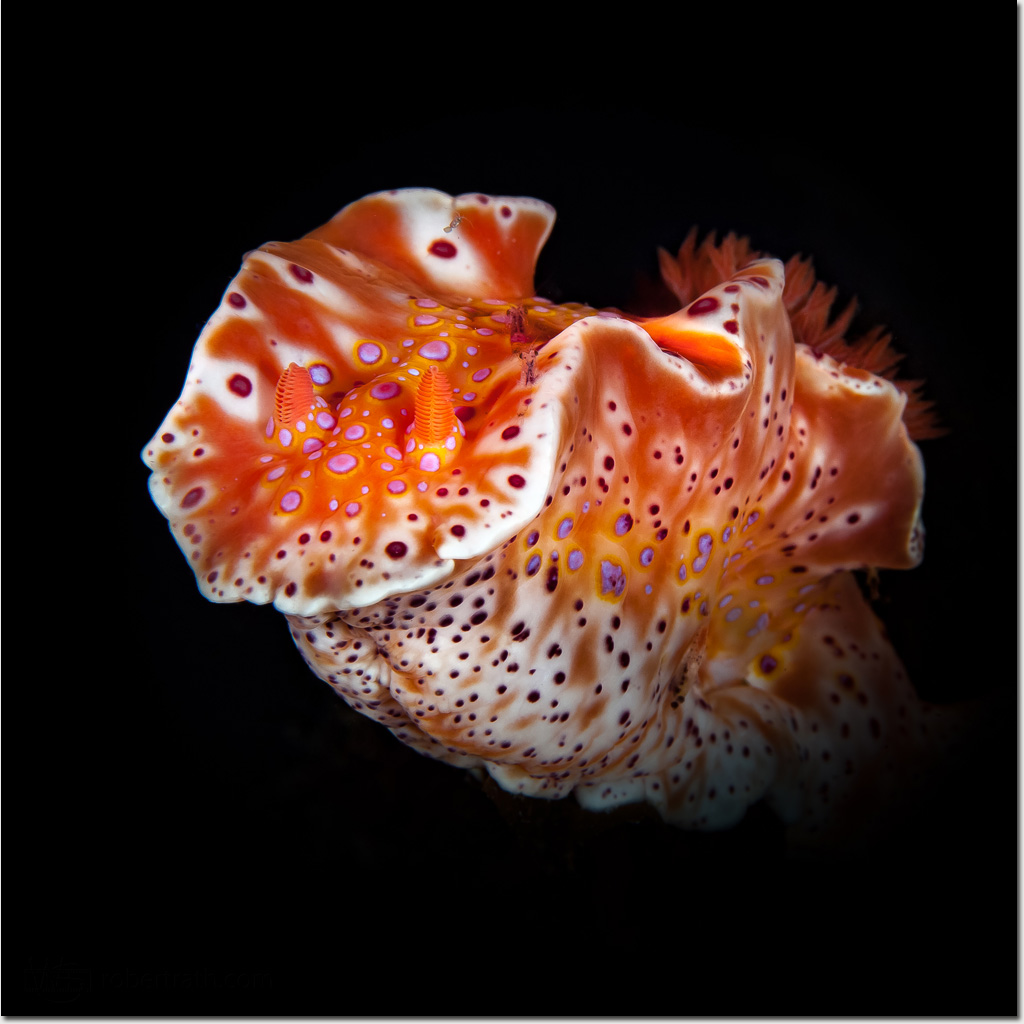
One of the wonderful things I like about macro photography are those tiny little surprises you discover when you zoom in on your subject while editing.
What seemed at first to be a solitary nudibranch, in this image Ceratosoma brevicaudatum, turned out to have a few hidden gems, those little creature just too small to see while diving.
In this image there are three minute shrimp around 1mm in length cleaning the nudibranch's skin while a minuscule amphipod of less than a half a millimeter in length hovers above.
Love those little gems.
Photo: Robert Rath, 'Little Gems', 1/60s f/18 ISO320 100mm
Saturday, February 23. 2019
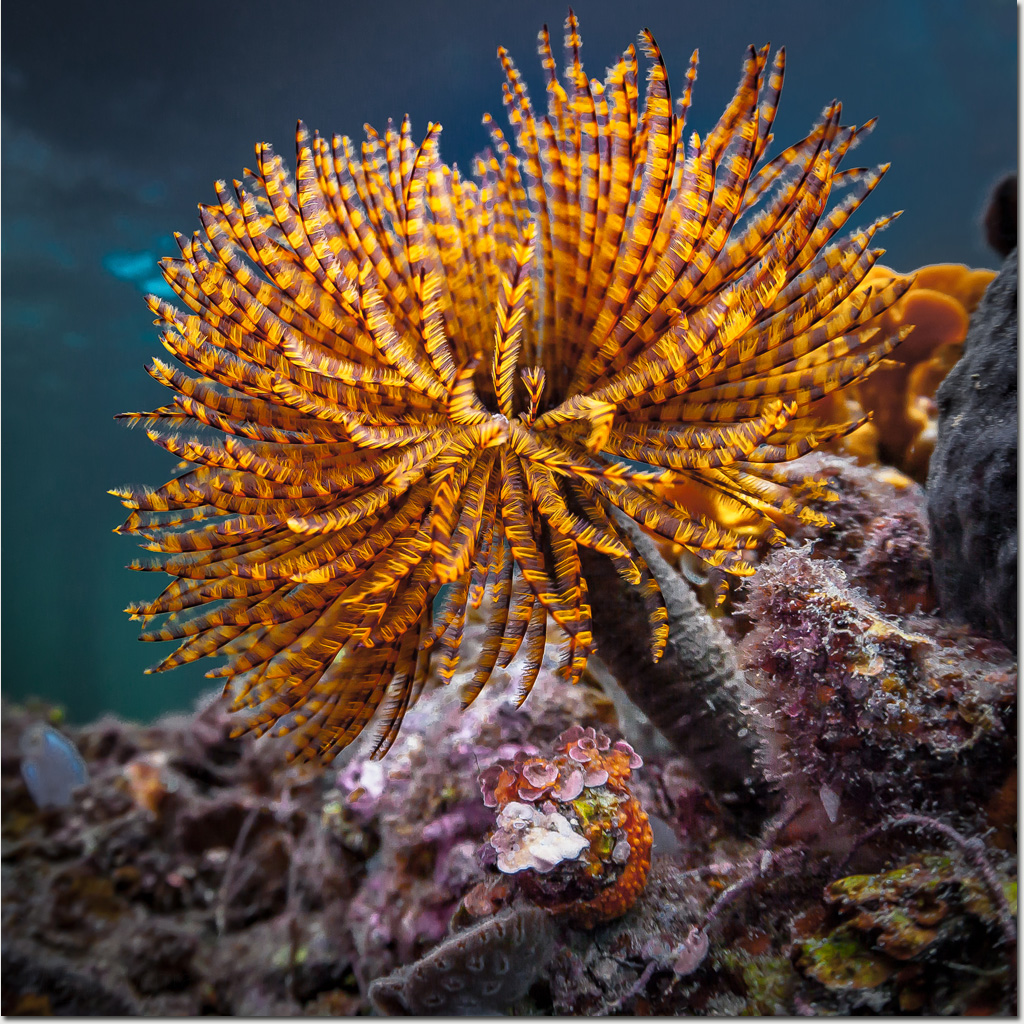
This hand sized fan worm is one of the many spectacular creatures that inhabit our local waters. I say local but it really is another world altogether.
It looks like a plant; like some exotic miniature palm tree. This guy however is a worm which builds a tubular casing away from its supporting structure so that it can extend its frond like appendages out into the current to feed.
Approach too close and in an instant it will retract back into the safety of its tube. Imagine a coconut palm doing that!
Southern fan worm Sabellastarte australiensis.
Photo: Robert Rath, 'Another World' 1/50s f/7.1 ISO320 15mm
Monday, February 18. 2019
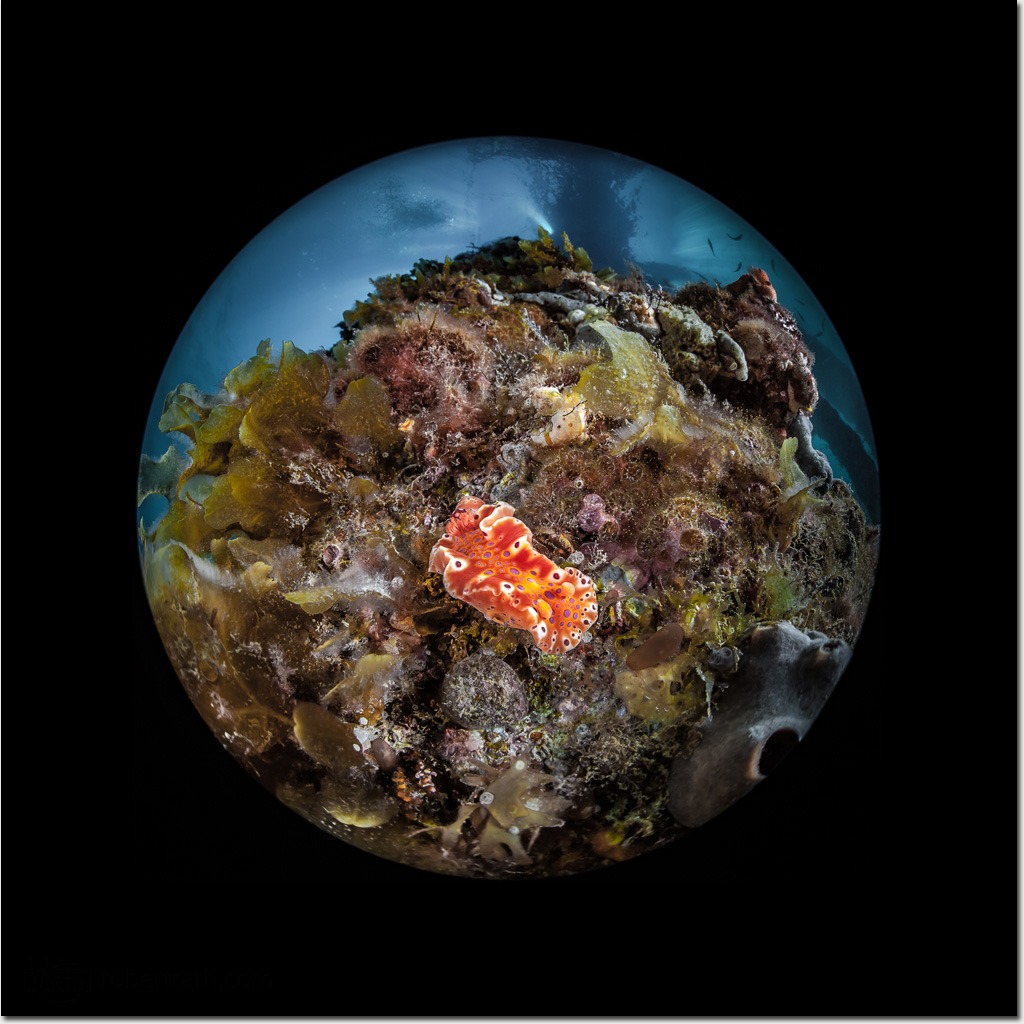
In the visual cacophony of this scene the camera has captured everything from the jetty pylons and fish swimming near the surface to the bright orange nudibranch grazing on the rocky reef foreground. Is this really a fish's eye view within the underwater world? Perhaps, but not for the reasons you might think.
Optically speaking the lenses of all creatures with non-compound fleshy eyeballs including fish, reptiles, birds and mammals including us would all be classed as 'fish-eye' according to camera lens manufacturers. Those normal rectilinear lenses we are so accustomed to on our cameras are an intentional optical debasement which introducing their own unique distortion in an attempt to replicated our brain's ability to straighten curves when our common sense tells us they should be straight.
A fish-eye lens, in its simplicity, lets the brain of its beholder do the work instead. As for how fish feels about those peripheral curves as they swim about their business, I'd suggest they could not care less about straight lines anyway.
Photo: Robert Rath, 'The Fish's Eye' 1/100s f/11 ISO160 8mm
Sunday, February 17. 2019
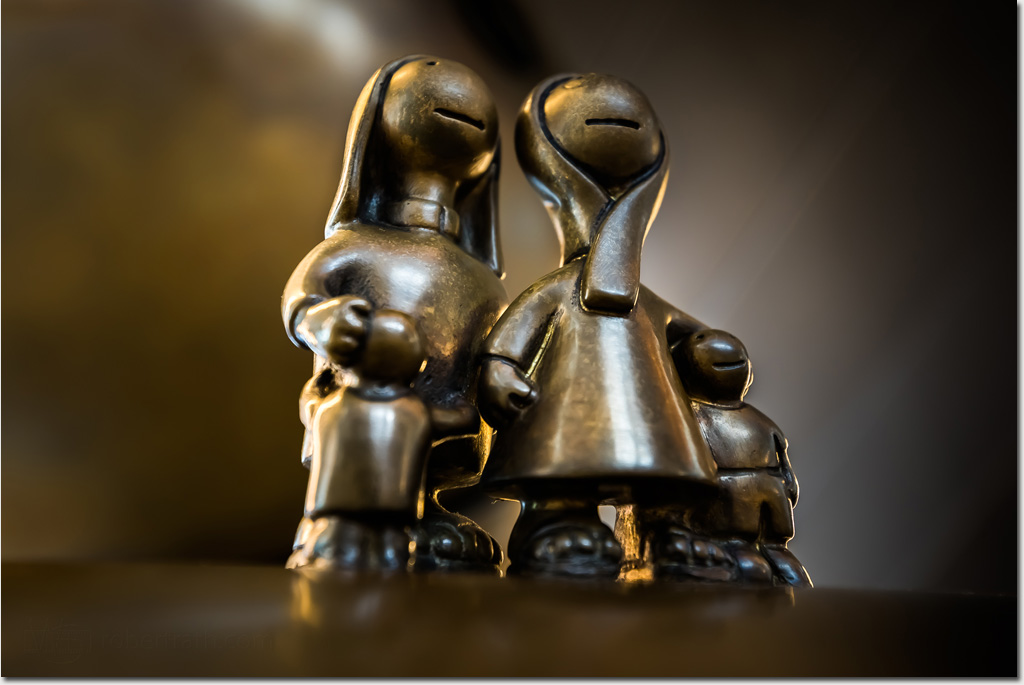
This image is the last of my Bronzies set; a collection of tiny bronze figurines by Tomm Otterness, adorning his much larger 'Other Worlds' installation within Hamad International Airport.
Yes it probably is the cliché of clichés. Still, because they are in bronze there is something 'other worldly' which disconnects it from humanity.
So, clichéd it may be but I love the feeling of love and nurture here and to me it symbolises family in any flavour you choose to imagine.
Photo: Robert Rath, 'Family' 1/10s f/4.0 ISO800 34mm
Saturday, February 16. 2019

There is no doubting the reason for two commuters being here. It's work travel. The suit and tie, the briefcases, the smart attire and not a handbag in sight are all the evidence I need.
If I were to hazard I guess, I'd say it was early morning at some outlying platform. The man, who catches the train here every morning has never said hello to the woman before being way too shy. This morning however he takes a chance.
'Looks like it might rain today' he suggests hoping to break the ice.
She looks up, sighs and without saying a word wonders to herself if she should have brought an umbrella.
Out of earshot the platform attendant checks the track in his own little world.
... bronzies by Tomm Otterness, 'Other Worlds', Hamad International Airport
Photo: Robert Rath, 'Waiting For The Train' 6s f/22 ISO800 16mm
Wednesday, February 13. 2019
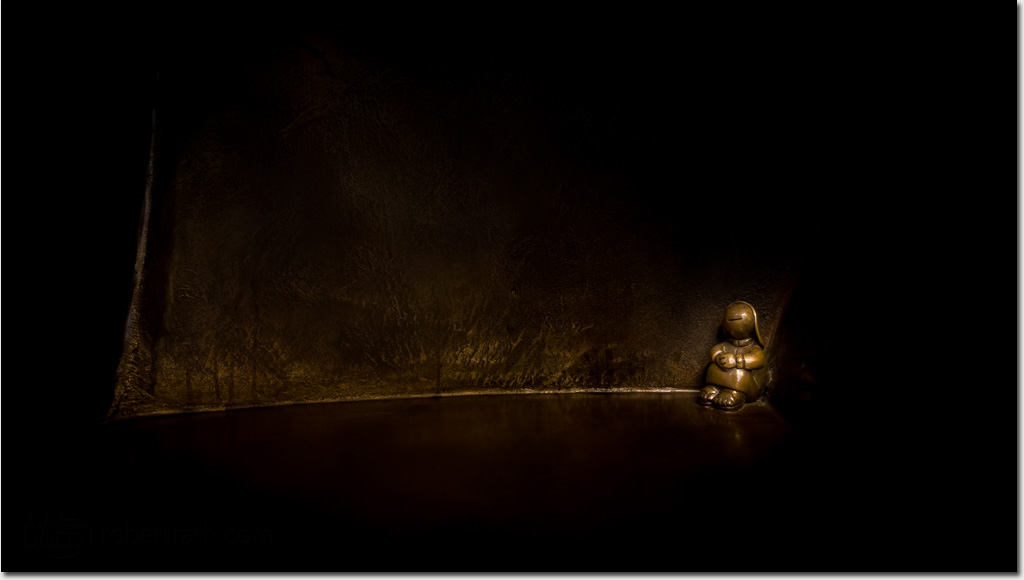
Little bronze personalities came to life in all sorts of nooks and crannies as I continued exploring the 'Other Worlds' installation by Tomm Otterness during my Doha transit.
The four individuals coming together in this scene particularly caught my attention. The couple on the left appear attired in working clothes, overalls and an apron while the couple to the right appear to be of a different class with the more elegant clothing, sandals and even a wristwatch.
Despite their differences I felt that some some cordial engagement was taking place here along with a mutual respect. Perhaps a negotiation or an agreement yet to be made. Perhaps just a meeting of minds.
Photo: Robert Rath, 'A Meeting of Minds' 0.8s f/4.5 ISO320 16mm
Tuesday, February 12. 2019
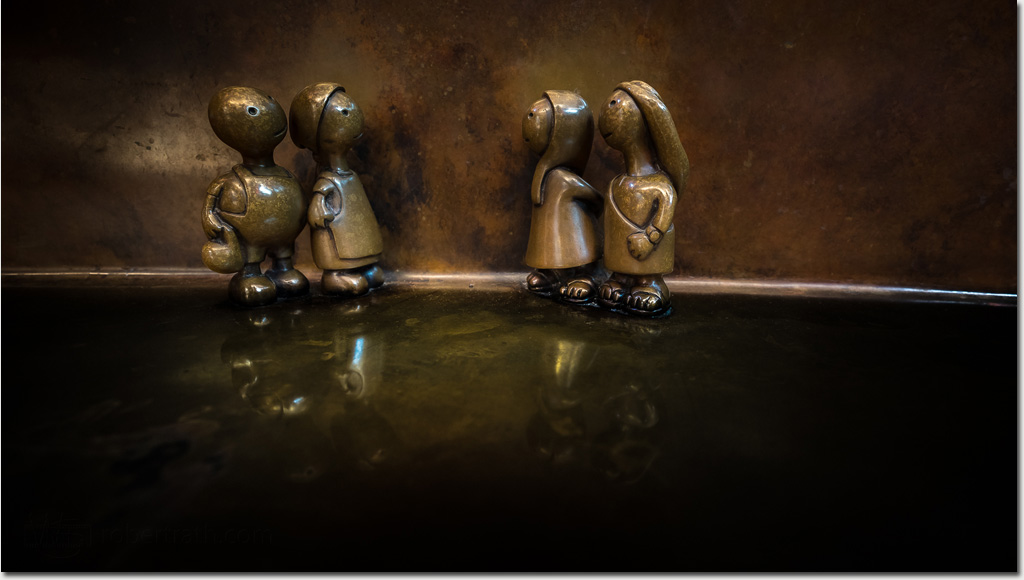
Little bronze personalities came to life in all sorts of nooks and crannies as I continued exploring the 'Other Worlds' installation by Tomm Otterness during my Doha transit.
The four individuals coming together in this scene particularly caught my attention. The couple on the left appear attired in working clothes, overalls and an apron while the couple to the right appear to be of a different class with the more elegant clothing, sandals and even a wristwatch.
Despite their differences I felt that some some cordial engagement was taking place here along with a mutual respect. Perhaps a negotiation or an agreement yet to be made. Perhaps just a meeting of minds.
Photo: Robert Rath, 'A Meeting of Minds' 0.8s f/4.5 ISO320 16mm
Monday, February 11. 2019

My very first memories of gazing into the heavens and marvelling at the night sky were not so different from the little bronzie in this image.
In my case it was not bronze but the painted steel roof of my parent's car. Somehow those extra few feet made all the difference.
All these year later those memories burn just as brightly when ever I lay on my back and gaze up at the stars.
Photo: Robert Rath, 'Stargazing' 10s f/18 ISO800 26mm
Sunday, February 10. 2019

When I first transited via Doha's Hamad International Airport I was impressed by the large interactive bronze sculptures by American artist Tomm Otterness.
At the time I captured some wide angle images of the pieces in context but did not really give them the attention they deserved. I did however notice they seemed to covered by odd little bronze protrusion, like fresh buds on a tree.
On my second visit I decided to explore these little bumps and was delighted to discover tiny little bronze figurines in all sorts of strange places and predicaments. I was so enamoured with these little people I create as set of images I call 'The Bronzies'.
In 'Emergence' I imagined a little bronzie living a life of darkness in a void beneath the ground knowing nothing of the world above until the day a hole appeared.
On climbing out, in a single moment, I feel this scene represent excitement, fear, welcome, relief and joy.
It is delightful, whimsical and simply beautiful. Thank you Tomm.
Photo: Robert Rath, 'Emergence' 1/20s f/3.2 ISO320 16mm
Friday, February 8. 2019
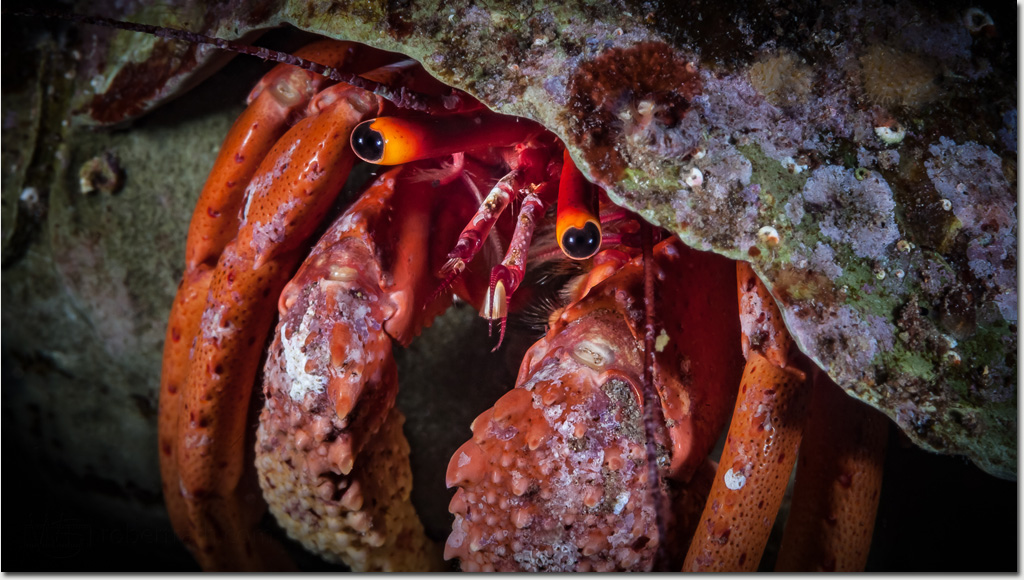
What do dogs and hermit crabs have in common?
I wonder what kind of answers I'd get if I strolled down a typical busy shopping mall and asked random passers-by this question?
Well to start with, dogs and hermit crabs have two eyes. Perhaps you could even draw some tenuous connection between kennels and shells. But really, why would I even pose such a question? From my point of view it is all about having a willing photogenic subject.
For divers, hermit crabs are one of the easiest critters to photograph. They go about their business regardless of being observed. Even if you do startle them back into their shell it doesn't take long for them to re-emerge. And, if some unscrupulous diver were to pick one up and place it somewhere particular to stage a photograph, the hermit crab would happily show itself again when the coast was clear and carry on about its business.
So in my opinion, dogs and hermit crabs both make the most awesomely photogenic and most easy-to-photograph subjects.
Photo: Robert Rath, 'Of Dog and Hermit Crabs' 1/160s f/22 ISO160 100mm
Thursday, February 7. 2019
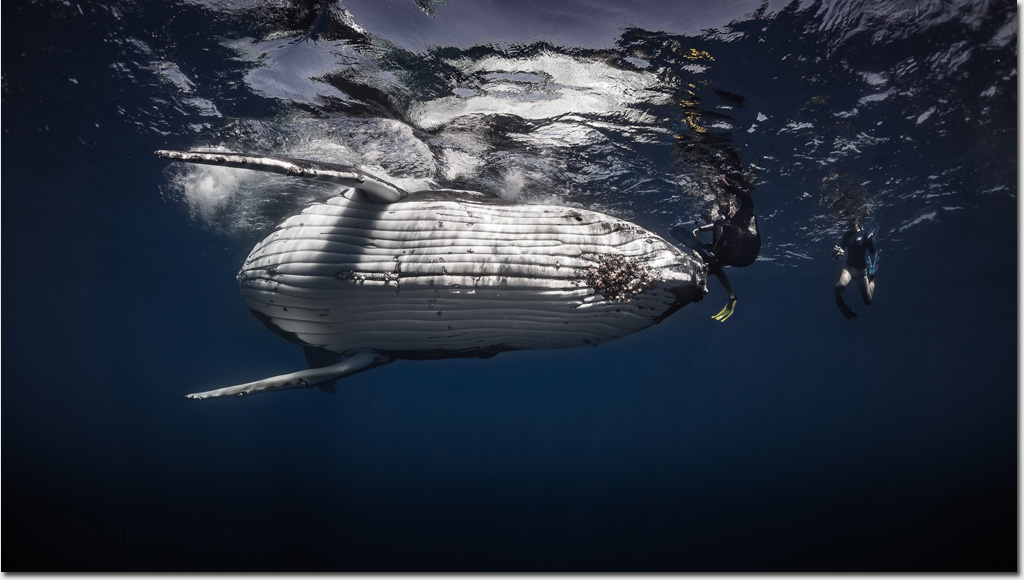
'Hello' said the whale as he swam closer and closer.
'Hello' said the whale as he craned for some intelligent response.
Finally in frustration at their lack of courtesy he came rushing in fast, stopped, then gave a gentle nudge. 'What part of hello did you not get!
Ah ..., memories of Tonga. I can't wait to be swimming with whales again.
Photo: Robert Rath, 'What Part of Hello Did You Not Get!' 1/320s f/7.1 ISO160 15mm
|